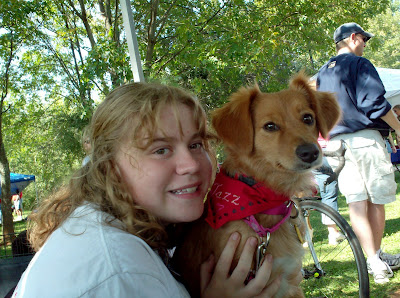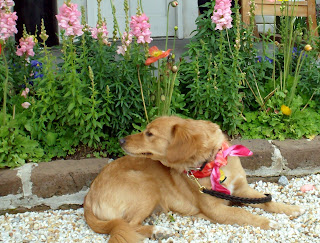Most dog owners have experienced the various kinds of nail trimmers readily available for trimming dogs' nails. If you're like me, you've experienced pinched, broken skin from some of these awful things, and most certainly have experienced a nail trimmed too short and the profuse blood that resulted.
Not much fun, is it?
The dog agrees.
Two things led me to using a Dremil tool. One, I have rather arthritic hands, most especially in the thumb joints and I can not squeeze those nail trimmers. Two, therapy dogs encounter all kinds of people, some are elderly and have quite delicate, thin skin. Toenails with sharp edges are simply unacceptable in those circumstances. So, the nail trimmer had to go.
Recently, a new nail trimming device came onto the market promising an easier time of trimming nails, a special guard to protect all involved, and no more quicked nails. Pretty cool, ya? Maybe not. According to animal health professionals, many folks are returning to their vet for nail trimming duties as their dog simply did not accept this new tool, AT ALL.
Here's the scoop folks. You didn't get in the drivers seat of the car for the first time and hit the Indy 500, now did you? Learning new things takes time. Learn incrementally. Small steps..... one step at a time. "Small victories" is what you're after.
Your friendly hardware Dremil tool is precisely the same as a specialized pet nail grinder and the new and improved "Pet-i-cure"..... who's claim to fame is the protective cover. This is good if your dog has a long coat that can easily become entangled in a normal dremil tool.
First, there's the noise. Why would any dog want you to come at their precious feet with a whirring monster, grab hold of their toes and make them vibrate uncomfortably with this loud machine? ........ A first time experience with a dremil tool should be nothing more than turning the dremil on, letting the dog investigate and giving him treats. That's it.
Once the dog is comfortable with the sound of the dremil, touch the dog with the handle end of the machine so that he can feel the vibrations.....praise and give treats. Allow the dog to sniff (safely) if he chooses.
Once the dog accepts the noise and vibration and the tool touching him with ease, begin "some" nail grinding. It's important to note that at this stage getting the nail short enough is NOT the goal. Touching the nail with the grinder successfully IS the goal. Praise and treat. Bonus points if the dog allows you to briefly touch each and every nail.
It's at this stage of learning that you will be doing a lot of nail grooming. If you do these exercises weekly, it's going to take a lot longer for the dog to accept the dremil and by the time you can really grind the nails, they're going to be rather long. At this early stage, you should be sitting down with your dog daily or every other day.
Location, location, location. Pick a quiet area for nail trimming time free of other dogs, kids, typical household activity. I use a bathroom where all the bathing, grooming things are kept. Your own energy is key to this activity as well. You should be calm and light of heart. If you are nervous and on edge, the dog will feel there is something to be frightened of and you're job just got much more difficult. Singing to your dog works well to calm both you and your dog.
With time your dog will come to accept the dremil in fine style. You'll be able to carefully and accurately trim each nail with expert care. Getting to this stage varies by dog, but it's energy well put to good nail/foot health.
So, if you spent hard earned $$ on one of those fancy new Pet-i-Cure nail trimmers, don't loose hope. It's a learning process. Those dogs in their commercials? They've been getting their nails trimmed regularly for years and are very adept to it. Your dog will be too.....in time.






















.jpg)



















